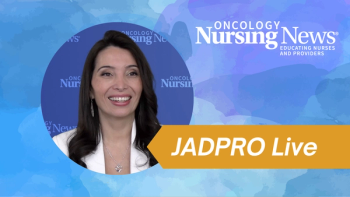
The Rising Cost of Cancer Drugs Takes a Toll
Oncology nurses must acknowledge patients’ concerns about financial toxicity and help address them.
Deborah A. Boyle, MSN, RN, AOCNS, FAAN
Editor in ChiefOncology Nursing News
Cancer causes significant financial adversity within the American healthcare system. Hence, the costs associated with cancer are often characterized using negative descriptors such as burden, toxicity, and harm. This includes hardship on patients and their families attempting to recover from this life-threatening illness.1
A recent study published in the Journal of Oncology Practice addressed total expenditures on anti-cancer drugs in the US between 2011 and 2016.2 Overall, expenditures rose from $26.8 billion in 2011 to $42.1 billion in 2016, with the greatest escalation in costs evident in 2015 (15.6% from the previous year). This was most likely correlated with the rising availability and use of targeted therapies during this timeframe.3
These rising drug-related costs are trickling down and affecting the pocketbooks of patients and their families. High insurance deductibles, premiums, and uninsured populations are contributing to the growing number of Americans who are worried about or unable to afford the contemporary cost of cancer treatment.
In another study published in the same journal, researchers found that out of nearly 2,000 adult patients with cancer who were identified through a health registry/survivor cohort, 26% agreed that the definition of financial toxicity is: “having to pay for more medical care than you can afford.” Respondents in this group were characterized as individuals who fell into 1 or more of these categories: under 65 years of age, female, nonwhite, non-English speaking, unmarried, less educated, and having received a cancer diagnosis within the immediate timeframe of their questionnaire completion. Other significant attributes of this group were an increased likeliness to report noncompliance with medications, forgo mental health support, follow up with physician’s visits, and receive recommended medical tests. These individuals most commonly cited reasons for delayed or missed care as the absence of insurance coverage associated with the weighed decision of paying for cancer care versus affording household expenses. 4
While historically, oncology nurses focused on the physiological toxicity of therapies, we now have to address new barriers to optimal patient care. Existing resources to address financial toxicity may be scarce within some oncology practice settings. Oncology nurses need to acknowledge this and do more to identify resources to assist with this threat to the quality of our patients’ survival.
References
- Altice CK, Banegas MP, Tucker-Seeley RD, Yabroff KR. Financial hardships experienced by cancer survivors: A systematic review. J Natl Cancer Inst. 2017;109(2). doi: 10.1093/jnci/djw205.
- Hong SJ, Li EC, Matusiak LM, Schumock GT. Spending on antineoplastic agents in the United States, 2011 to 2016. J Oncol Practice. 2018;14(11): e683-e691.
- Tran G, Zafar SY. Financial toxicity and implications for cancer care in the era of molecular and immune therapies. Ann Trans Med. 2018. doi:10.21037/atm.2018.03.28.
- Knight TG, Deal AM, Dusetzina SB, et al. Financial toxicity in adults with cancer: Adverse outcomes and non-compliance. J Oncol Practice. 2018. doi: 10.1200/JOP.18.00120.


















































































